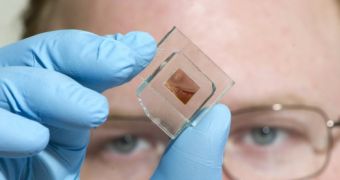A group of scientists led by Zhenan Bao, chemical engineering professor at Stanford University, have managed to build the first carbon photovoltaics.
Zhenan Bao and his team's experiment consists of a device constructed out of a photoactive layer placed between two electrodes, reports Science Daily.
While in the usual solar cells the electrodes are made out of silver and indium tin oxide (ITO), in the ones created by Bao these materials have been replaced by graphene, a substance made of pure carbon atoms disposed in a hexagonal pattern, in a one-atom thick sheet.
“Materials like indium are scarce and becoming more expensive as the demand for solar cells, touchscreen panels and other electronic devices grows. Carbon, on the other hand, is low cost and Earth-abundant,” explains Bao.
For the inside layer, researchers have used carbon nanotubes, a material 10,000 times thinner than human hair. The carbon nanotubes where chosen due to their “extraordinary electrical conductivity and light-absorption properties,” says Bao.
Even if the all-carbon solar cells are yet rudimentary and fairly efficient, compared to the silicon materials already in use, researchers believe that their further improvement could represent a great evolution in the solar energy industry.
“Carbon is one of the most abundant elements on earth, and it is versatile,” declares professor Bao, as cited by MIT Technology Review.
Introducing carbon in solar cells' construction on a large scale would considerably decrease the development expenses, at the same time adding a great deal to their flexibility and resistance.
However, researchers declare carbon photovoltaics are not meant to replace the silicon ones. They have been conceived as a rather supplementary solution.
“Perhaps in the future we can look at alternative markets where flexible carbon solar cells are coated on the surface of buildings, on windows or on cars to generate electricity,” Bao says.

 14 DAY TRIAL //
14 DAY TRIAL //